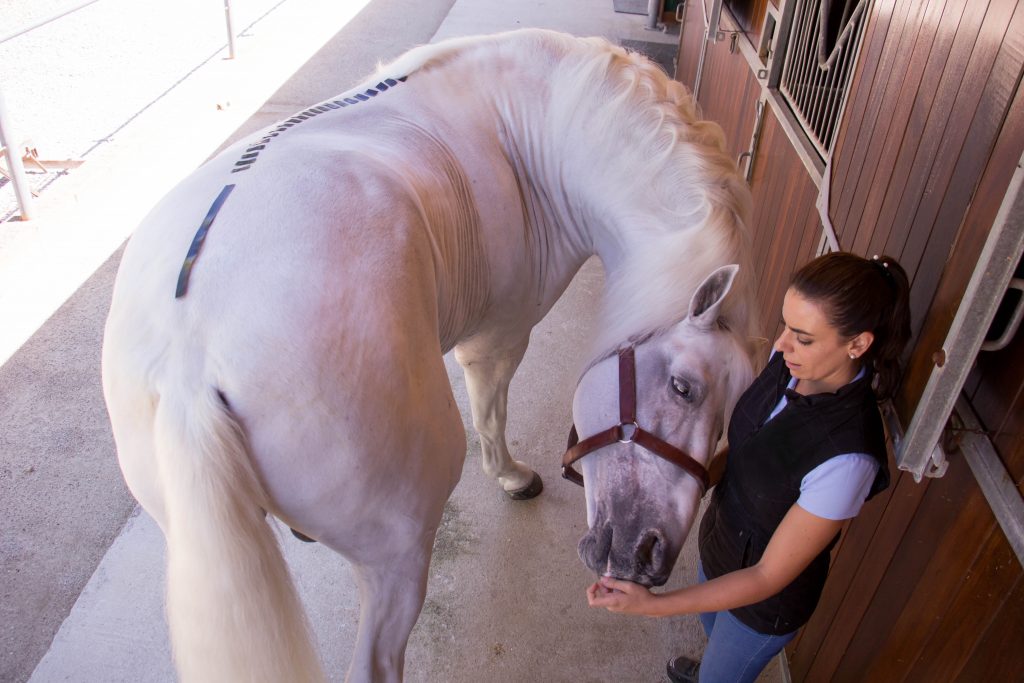Muscle chains according to L. Busquet (vi) are very important to consider when studying musculoskeletal biomechanics. These are sets of continuous bands of myofascia and sets of muscles that perform a synergistic function. These run through tensions and propagate forces that stabilize and mobilize the horse’s body. If forces are coherent the horse will have good statics and good dynamics, but if the tension is modified, it can cause alterations on the statics and dynamics.
**** It is important to know that when an external force deforms the musculoskeletal structure, the action is transmitted throughout the structure and the alteration is not only located at the point of application, but also appears at the weakest point of the muscle chain.
Muscle chains injuries are very well described in humans but there is still no scientific studies to prove their existence in equines. J-M Denoix (vii) explains on his book the existence of two types of muscle chains in the horse and their function is emphasized, but it does not describe how an alteration in the myofascial chain system and possible lesional chains affects it. Taking into account the equine musculoskeletal biomechanics and the theoretical bases of the functional alterations of different muscle chains in humans, the possible compensatory relationships of the musculoskeletal alterations in horses are described below according to Alba Lozano. It is important to note that the following section is not evidenced in any scientific study and therefore belongs to our own knowledge that is based on a level III of evidence.
Below you can find examples of how an injury can modify the biomechanics of a muscle chains and produce an injury chain:
A simple example of musculoskeletal alteration is found when there is a muscle that remains blocked in a short position or in concentric contraction maintained over time; Each time a muscle group contracts, the opposing muscle group must lengthen to allow movement and maintain the body’s balance. Symptoms of the alteration will be evident, such as tenderness or lameness when there is a muscle blockage and movement occurs since forced elongation of the contracted muscle and contraction of the elongated muscle will be necessary.
Another classic example is observed when a horse has an injury on the left front, whether due to tendonitis, ligament rupture, etc. This alteration can produce pain, sensitivity or functional impotence / lameness in the right hind due to muscle compensation. This is the reason we must always analyze globally the alterations and treat each analytically so the recovery is complete and we can avoid possible future injuries or injury chains.
Finally we find another classic example of back pain in horses: the dorsal spinous impingement or “kissing spine” (viii). Generally, this structural alteration is found between the 12th and 18th thoracic vertebrae, where the rider sits. The muscular etiopathogenesis of this alteration can be described by the etiopathogenesis of the local stabilizing musculature described in the previous post. Symptoms that horses show is not only functional impotence or lameness, but also the display of avoidance behaviors that affect their work, such as refusing to accept the contact of the bit, preferring to work with the head up and the back sunken or to be reluctant to work in the galloping air.
vi Busquet L. Les chaines musculaires du tronc et de la colonne cervicale. Traite d’ostéopathie myotensive, tome 1. Maloine, 1984
vii Denoix JM, Pailloux JP. Physical therapy and massage for horse. London: Manson 1996
viii de Cocq P, van Weeren PR, Back W. Effects of girth, saddle and weight on movements of the horse. Equine Vet J. 2004 Dec;36(8):758-63. Erratum in: Equine Vet J. 2005 May;37(3):231


